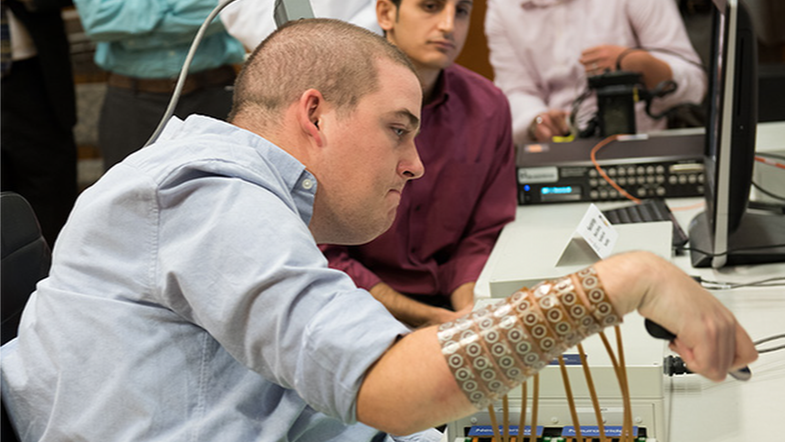For The First Time, Scientists Restore Finger Movements In Paralyzed Man
With two sets of electrodes that create a "neural bypass"

Four years ago, now 24-year-old Ian Burkhart was in a diving accident that paralyzed him below the shoulder. Most of the 250,000 Americans with spinal cord injuries simply learn to go through life with limited mobility. But thanks to a team at Ohio State University, that wasn’t the case for Burkhart—an implant allowed his brain to send the proper signals to move his finger, hand, and wrist, bypassing the damaged nerve pathways. The technique, about which a study was published today in Nature, could someday help people around the planet regain movement in their limbs.
In order to regain movement in Burkhart’s right hand, the researchers implanted an array of electrodes in his left primary motor cortex, a region in the front of the brain that helps plan and direct movements. Then Burkhart spent three sessions per week during the next 15 months training his brain to use it. A machine learning algorithm learned to interpret which brain waves corresponded to the patient’s intended movements. When Burkhart’s brain would emit the proper signals, the implant would send those signals through wires to a flexible sleeve around his wrist lined with electrodes that would stimulate the muscles accordingly.
The researchers used different types of tests to see how well Burkhart could perform six different hand, wrist, and finger movements. An algorithm determined that Burkhart’s movements were about 90 percent accurate on average. After those repeated tasks improved his strength, Burkhart was able to pour water from a bottle into a jar, then stir it—an impressive feat for someone who wasn’t able to move his hand at all not long before. He was also able to swipe a credit card and even play the Guitar Hero video game.
This technique is invasive, the researchers note, which means that it might not be suitable for patients who are already in poor health or have compromised immune systems that make them more prone to infection. And typically implanted “neural bypass” devices like these allow for less range of movement than the one used in this study. It’s also important to note that the implant doesn’t restore a patient’s ability to feel, though other researchers are working on that problem, mostly with prosthetics. Maybe someday the two technologies could merge to give patients both the ability to move and to feel.
Still, the study presents a big advance—Burkhart was able to move his hand in a way that has never before been possible. That could have big implications if the technology becomes used widely.
“Our goal was to use this technology so that these patients like Ian can be more in charge of their lives and can be more independent,” Ali Rezai, one of the researchers involved in the study, said in a statement. “This really provides hope, we believe, for many patients in the future.”
In a few years, the researchers hope to develop a wireless system that could make movements easier for patients.